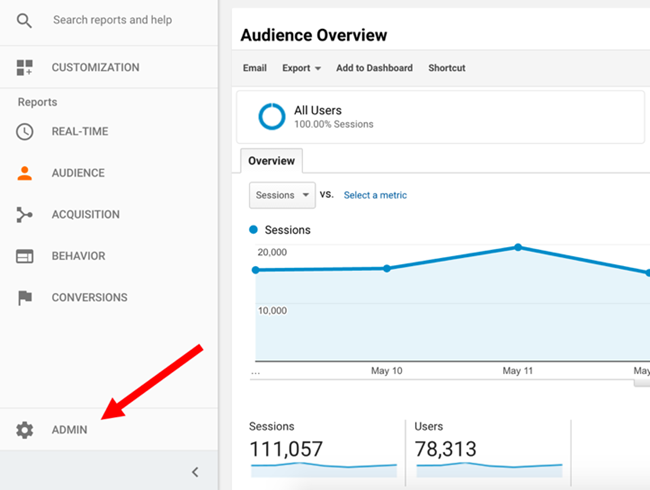A Full Guide to Remarketing In Google Analytics
Maximize Your ROI With Remarketing in Google Analytics
By taking advantage of the power of customer information and tailoring ads to particular audience sections, organizations can significantly enhance their conversion prices. The trip to optimizing ROI via remarketing is a nuanced path led with understandings and chances that can improve the trajectory of your advertising and marketing ventures.
Comprehending Remarketing in Google Analytics
Recognizing remarketing in Google Analytics is essential for maximizing your digital advertising and marketing technique. Remarketing enables you to target customers who have actually previously visited your site or communicated with your application, providing them with customized ads as they browse other sites or use various other applications within the Google Display Network. This technique aids keep your brand name top of mind and motivates users to return to your site, inevitably enhancing the likelihood of conversion.
By making use of Google Analytics, you can track the performance of your remarketing campaigns, getting valuable understandings right into customer behavior, interaction, and conversions. This information allows you to refine your targeting, bidding, and messaging approaches to enhance the general effectiveness of your projects.
Furthermore, comprehending the various kinds of remarketing listings readily available in Google Analytics, such as typical, vibrant, and comparable audiences, permits you to create customized and highly fractional campaigns tailored to particular individual sections. This level of granularity can substantially enhance the importance and effect of your remarketing initiatives, ultimately maximizing your return on investment.
Establishing Remarketing Listings
To effectively execute remarketing projects in Google Analytics, the preliminary action includes setting up and producing remarketing listings targeting particular customer sectors based upon their interactions with your internet site or app. By establishing up remarketing lists, you can tailor your advertising and marketing initiatives to reach users that have already shown rate of interest in your products or services.
To start, navigate to the Admin area of your Google Analytics account and choose the Residential property where you wish to create the remarketing list. Then, under the Residential or commercial property column, click on 'Audience Definitions' and pick 'Audiences.' Next, click on the red 'New Audience' button and pick 'Create New' to specify the parameters for your remarketing listing.

Crafting Reliable Remarketing Ads

When crafting your ads, concentrate on developing attention-grabbing headings and engaging visuals that stick out to potential consumers. Include solid calls-to-action that encourage individuals to revisit your website and complete a wanted action. Utilize vibrant remarketing to show tailored advertisements including items or solutions that individuals have formerly watched on your website.
Additionally, make certain that your advertisements are mobile-friendly given that a substantial section of web traffic comes from mobile phones. Test different advertisement variations to identify which designs and messages drive the Extra resources most effective results. By constantly refining and optimizing your remarketing advertisements based on performance information, you can optimize their performance and enhance your roi.
Studying Remarketing Performance

With Google Analytics, online marketers can track the efficiency of their remarketing projects in real-time, allowing them to identify trends, patterns, and areas for enhancement immediately. By assessing the data, online marketers can determine which advertisements are executing well, which target market sections are responding positively, and which networks are driving one of the most conversions. This degree of granularity allows marketing experts to make data-driven choices to optimize their remarketing advocate much better results.
Enhancing ROI With Remarketing
Evaluating remarketing information in Google Analytics enables marketing experts to identify possibilities for maximizing return on investment (ROI) with critical adjustments - What Is “Remarketing” In Google Analytics?. To maximize ROI with remarketing, it is important to comprehend the habits of your target market. By assessing user interactions, such as the web pages they saw, the products they saw, or the actions they handled your website, you can customize your remarketing campaigns a lot more successfully
Segmenting your target market based on their behavior enables you to create customized and targeted advertisements that are more probable to reverberate with them. By revealing pertinent advertisements to certain sectors of your audience, you can increase the chances of conversion and ultimately improve your ROI.
Additionally, checking different ad creatives, messaging, and deals can help recognize what resonates finest with your audience. A/B screening allows you to trying out different components of your advertisements to establish what drives the highest possible interaction and conversion prices.
Verdict
Finally, making best use of ROI with remarketing in Google Analytics calls for a strategic approach to analyzing user actions, segmenting target markets, developing customized ads, and optimizing campaign efficiency. By leveraging data-driven insights and testing various techniques, organizations can improve their remarketing initiatives to drive higher involvement and conversion rates. This systematic strategy guarantees that sources are successfully alloted in the direction of taking full advantage of rois in remarketing projects.
Next, click on the red these details 'New Target market' button and pick 'Develop New' to define the criteria for your remarketing list.
By constantly refining and enhancing your remarketing advertisements based on efficiency data, you can maximize their performance and improve your return on financial investment.
By delving into these insights, online marketers can get a detailed understanding of just how their remarketing efforts are resonating with their target audience and driving conversions. To make best use of ROI with remarketing, it is vital to understand the behavior of your audience.In final thought, making best use of ROI with remarketing in Google Analytics requires a tactical strategy to evaluating customer behavior, segmenting audiences, developing tailored ads, and enhancing campaign performance.